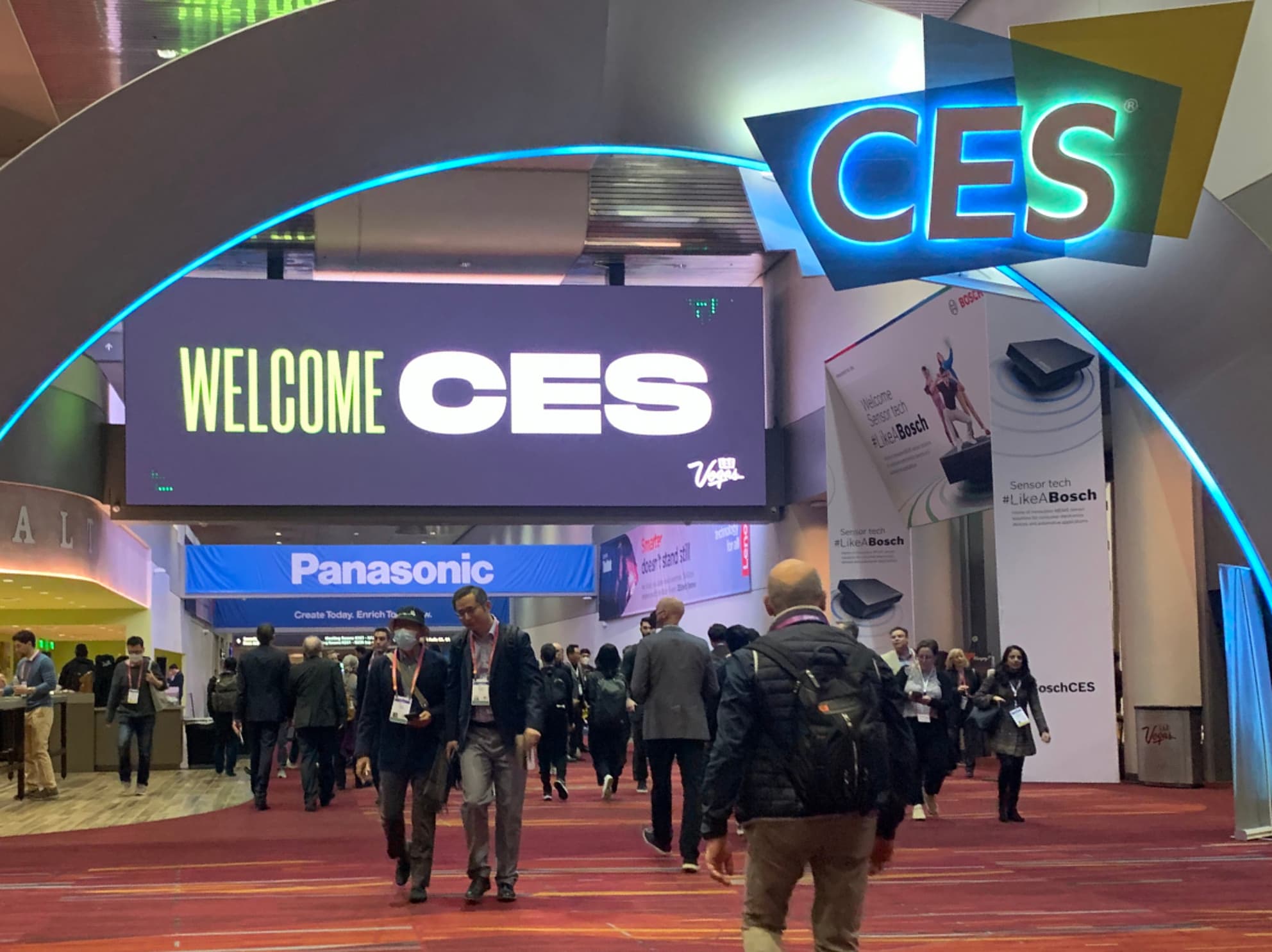
What do an AI oven, an autonomous ramen vending machine and a smart mixer have in common?
They were all new innovations released at the 2023 Consumer Electronics Show (CES) in Las Vegas, Nevada this month, the largest and most influential technology conference in the world.


Why we were there
Teams from General Mills attended the conference on a mission to discover, learn and experience the technologies supporting what’s new and next for our business and our consumers.

CES features every part of the tech sector including the latest innovations from the world’s biggest brands like LG, Sony, Abbott and Bosch.
“This show gives a preview of what the lives of our consumers might look like in the future,” says Chief Brand and Disruptive Growth Officer Doug Martin. “It’s important for us to stay in touch with that and understand how it’s going to impact how they eat.”
CES featured five key industry areas: Automotive, Healthcare, Home Entertainment/Smart Home, Food & Beverage and Gaming & Web3.
Employees who attended explored each industry area against the backdrop of our three pillars of connected commerce innovation.
Connected Commerce Innovation Pillars
Connected Home – Kitchen of the future
The pandemic has accelerated at-home cooking with the kitchen being the hub of activity. This, combined with new reliance and inspiration drawn directly from digital platforms, brings disruption into focus.
General Mills brands are in 95% of households and 12 million homes with smart appliances (about 10% of U.S. households).
The number of homes with smart appliances is expected to triple by 2028, which means almost 1 out of every 3 homes will offer a new interaction pathway for General Mills in the years ahead.
360 Shoppability – Commerce, everywhere
The mass adoption of mobile technology has led to always-on brand conversations and connections. Purchase opportunities are now layers across every aspect of daily life.
The average person spends 2.5 hours on social media a day.
Growth in social commerce is outpacing traditional commerce and is expected to account for 1.2 trillion in volume by 2025.
Agile Fulfillment – Anything, anytime, anywhere
Companies like Amazon continue to pioneer the ‘need it now’ expectation of today’s consumers. Shoppers expect instantaneous and seamless experiences to be readily available ‘now.’
1 out of 3 consumers will pay more for delivery within 2 hours.
This is a dramatic shift in expectations from just a few years ago. As faster delivery options come online, these expectations will continue to accelerate.
What we saw
Several new innovations were introduced during the 4-day conference. Here are some of the top new technologies our teams came across:
- Samsung Bespoke AI oven integrates AI into the oven to adjust temperature and time while using a camera to monitor progress and alert to potential burning of food.
- Yo-Kai Express Desk for 24/7 ramen from an autonomous vending machine.
- VersaWare nutrition tracking with a cutting board and mixing bowl that calculates calories automatically.
- OneThird developed an Avocado Scanner to detect peak freshness in the store.
- Orbisk is a Dutch startup using photo scanning technology to help restaurants reduce food waste by analyzing what goes into the trash.
- Tramontina Guru looks to take the guess work out of cooking by integrating a scale into the heating element to cook things to the right temperature and time based on what is added.
- GE Profile Smart Mixer has a built-in scale, voice controls, and torque feedback to adjust mixing based on changes in texture and viscosity for dough
Across all the innovations, a few key themes emerged from the show floor:
- AI infused everywhere – All electronics are becoming smart by integrating AI into them.
- Generative AI – With the rise of ChatGPT, we expect to see more services that help generate content through voice, text, and live video capture with an AI machine in the background.
- Smarter and faster hardware – While consumer devices took prominence at CES, those creating the tech inside showcased what is coming and the race is still focused on faster, smarter and more integrated.
- Sustainability first – Alternate energy, low-power challengers and holistic sustainability messaging was front and center.


What we’re doing next
One of the ways General Mills is looking to take more immediate action coming out of the conference is within the connected home.
“Our focus continues far beyond the show floor as we now look to translate this inspiration into action to drive transformation for our teams, brands, and the consumers we serve,” says Carter Jensen, senior manager, Global Commerce.
We're doing this by exploring partnerships with startups who are making big moves in this space. One of these is Smarter, an affordable AI solution that instantly transforms kitchens into connected experiences.
We met with Smarter at CES to demo their technology – a camera you place in your refrigerator or pantry that provides real-time grocery management, insights and alerts to enhance kitchen, grocery and cooking experiences.

With this camera, consumers can instantly unlock connected kitchen experiences, including automated replenishment, instant recipe recommendations based on current grocery inventory and food preferences, automated meal planning based on shopping patterns, and expiration alerts to minimize food waste.
For General Mills, this means we have the potential to better understand top consumer eating patterns, use of General Mills products vs. competitors, time stamps for interaction with our brands, overall consumption data, and more.
We can then use this data to create valuable brand experiences for consumers, and make strategic, clear first steps into the kitchen of the future.
